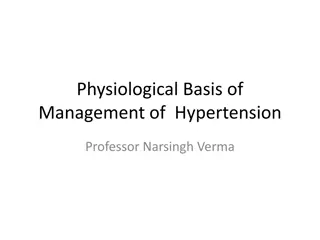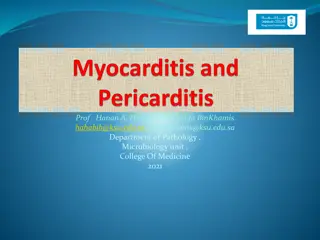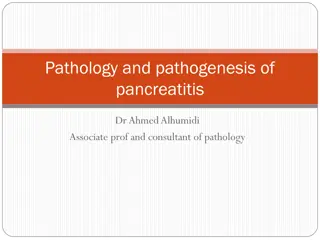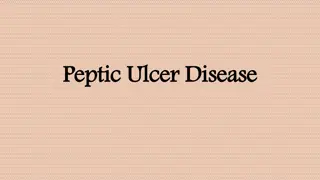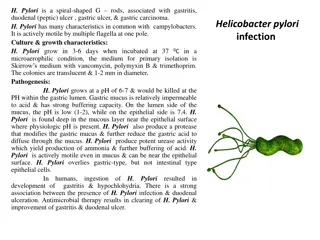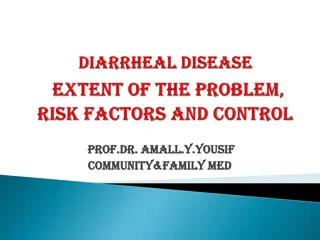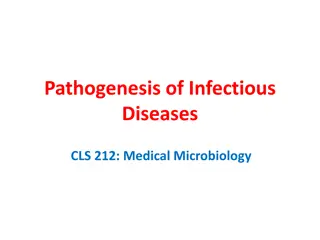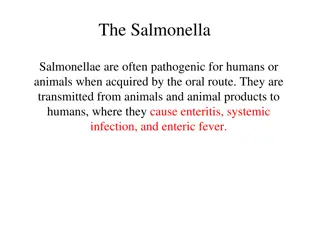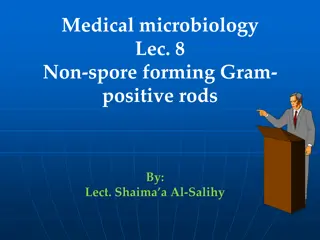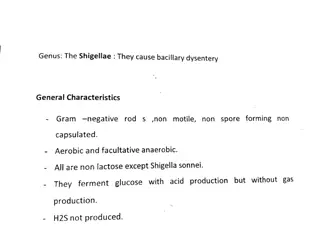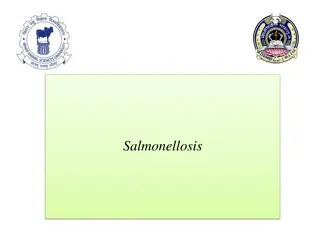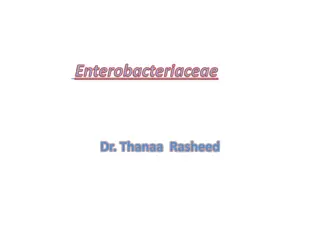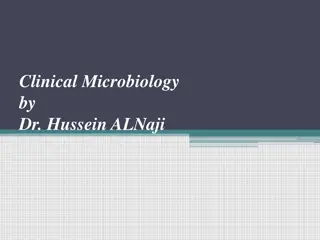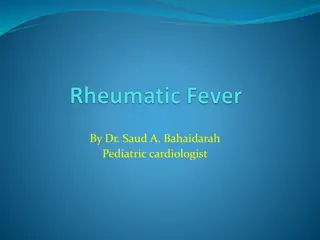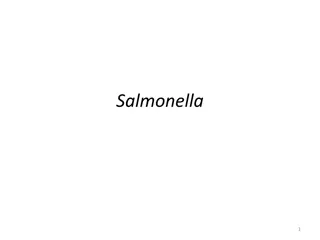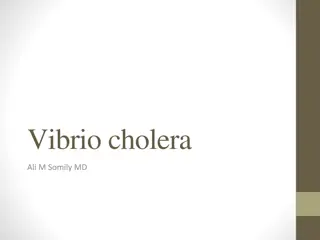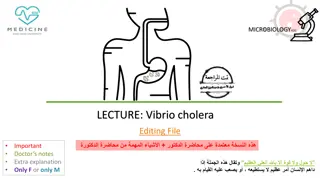Understanding Salmonella and Shigella Pathogenesis, Clinical Features, and Management
Explore the algorithms for identifying Salmonella and Shigella, their antigenic structures, virulence factors, pathogenesis, clinical features, and management concepts. Understand the characteristics, transmission, and prevention strategies for these gastrointestinal pathogens.
Download Presentation

Please find below an Image/Link to download the presentation.
The content on the website is provided AS IS for your information and personal use only. It may not be sold, licensed, or shared on other websites without obtaining consent from the author. Download presentation by click this link. If you encounter any issues during the download, it is possible that the publisher has removed the file from their server.
E N D
Presentation Transcript
GIT BLOCK Prof. Ali Somily & Prof .Hanan Habib Department of Pathology& Laboratory Medicine KSUMC
1-Develop an algorithm using biochemical to identify and classify Salmonella and Shigella 2- Describe the antigenic structures and virulence factors of Salmonella and Shigella 3- Compare the pathogenesis of various species of Salmonella and Shigella 4-Describe the clinical features and risk factors for the infection with the two organisms 5- Describe the general concepts for the management of gastroenteritis caused by both organisms.
Gram negative facultative anaerobic bacilli Non lactose fermenting colonies Motile
Has two species S.enterica (six subspecies I, II, III, IV, V, VI) S.borgori (rare) Cold blooded animal, birds, rodents, turtles, snake and fish
Fimbriae ( Pili) : for adherence Enterotoxin
O. Somatic antigen H. Flagellar antigen K. Capsular antigen
Visurface polysaccharide antigen in Salmonella serotype typhi prevents phagocytosis & allow intracellular survival. O Antigen (Heat stable) is lipopolysaccharide in the outer membrane H antigen (Heat labile)
Acute gastroenteritis Typhoid fever Nontyphoidal bacteremia Carrier state following Salmonella infection
Water, food and milk contaminated with human or animal excreta. Salmonella typhi and S. paratyphi : the source is human.
Food poisoning through contaminated food S. enterica subsp. enterica Source :poultry, milk, egg & egg products and handling pets Infective dose: 106bacteria IP: 8 36 hrs. fever, chills, watery diarrhea and abdominal pain. Self limiting. In sickle cell ,hemolytic disorder and ulcerative colitis, elderly or very young patients; the infection may be very severe. Patients at high risk for dissemination ; antimicrobial therapy is indicated.
Prolonged fever Bacteremia Involvement of the reticulo endothelial system (liver, spleen, intestines and mesentery) Dissemination to multiple organs Ingestion of contaminated food by infected or carrier individual Caused by Salmonella serotype typhi or S. paratyphi A, B and C (less severe) Common in tropical ,subtropical countries, travelers due to inappropriate sewage disposal and poor sanitation. IP : 9 14 days.
First week: First week: fever, malaise, anorexia, myalgia and a continuous dull frontal headache then, Patient develops constipation Mesenteric lymph node blood stream liver, spleen and bone marrow Engulfment of Salmonella by mononuclear phagocytes . Bacteria released into the blood stream again and can lead to high fever .Positive blood culture at this stage.
2 2nd Sustained fever & prolonged bacteremia. Invade gallbladder and Payer's patches Rose spots 2ndweek of fever Billiary tract GIT Organism isolated from stool in large number. ndand and 3 3rd rdweek week
Ceftriaxone Ciprofloxacin Trimelhoprim Sulfamethoxazole Ampicillin Azithromycin or Ceftriaxone for patients from India and SEAsia due to Ciprofloxacin resistance of strains. Ciprofloxacin can be used for patients from other areas. Uncomplicated cases of Salmonella gastroenteritis require fluid and electrolyte replacement only.
Necrotizing cholecystitis Bowel hemorrhage and perforation Pneumonia and thrombophlebitis Meningitis, osteomyelitis, endocarditis and abscesses.
Non lactose fermenting bacteria Cause bacillary dysentery ( blood, mucus and pus in the stool)
Has four species and four major O antigen groups All have O antigens ,some serotype has K antigen Shigella are non motile so lack H antigen
S.sonnei : most predominant in USA. Produce fever & watery diarrhea. S.flexneri :2ndcommon in developing countries Young adult & ( man who have sex with man) S. dysenteriae and S. boydii are most common isolates in developing countries S. dysenteriae type 1 associated with morbidity and mortality. Human is the only reservoir
Person to person through fecal oral route . Flies, fingers ( have role in spread). Food and water. Young children in daycare, people in crowded area and anal oral sex in developed countries. Low infective dose < 200 bacilli Penetrate epithelial cells ,leads to local inflammation, shedding of intestinal lining and ulcer formation.
High fever, chill, abdominal cramp and pain accompanied by tenesmus , bloody stool with mucus & leukocytes. IP : 24 - 48 hrs Can lead to rectal prolapsed in children Complications: ileus, obstruction dilatation and toxic mega colon Bacteremia in 4 % of severely ill patient Seizures, HUS ( hemolytic uremic syndrome)
-Both are Gram negative bacilli -Culture in selective media -Biochemical tests -Motility test -Serology for serotypes.
-Antibiotic indicated if symptoms were severe and to reduce duration of illness. -Antimicrobial agents depending on susceptibility testing including : Ampicillin Ceftriaxone TMP-SMX Ciprofloxacin


